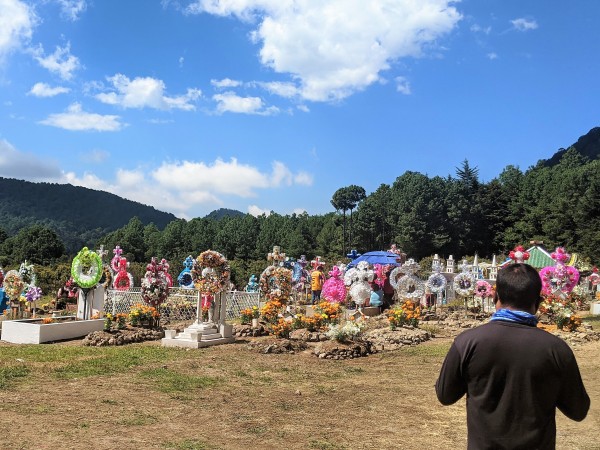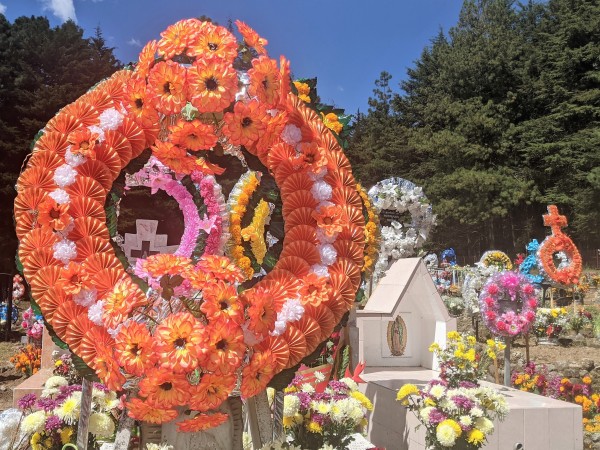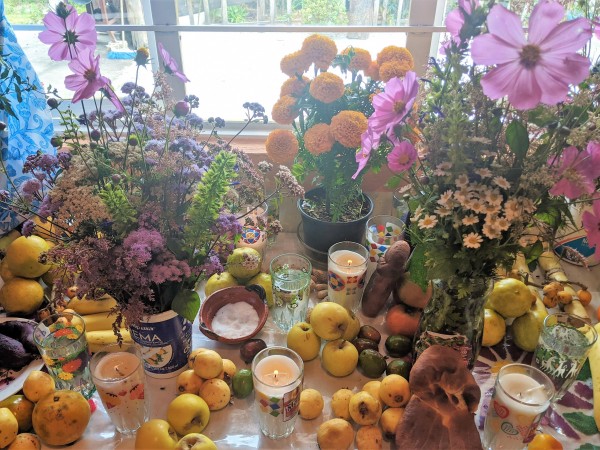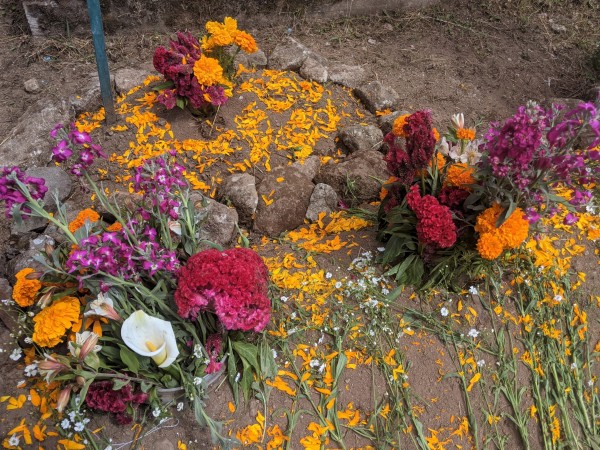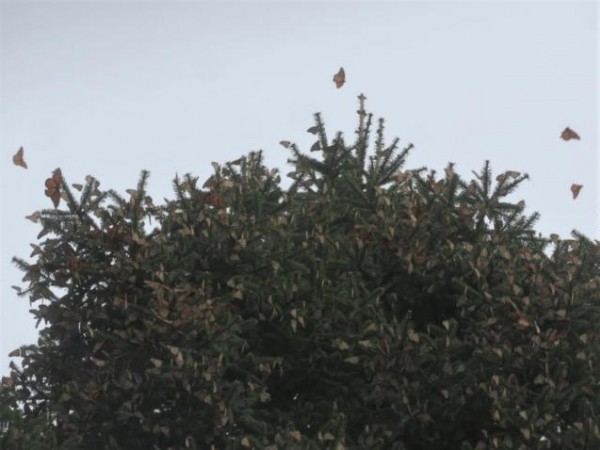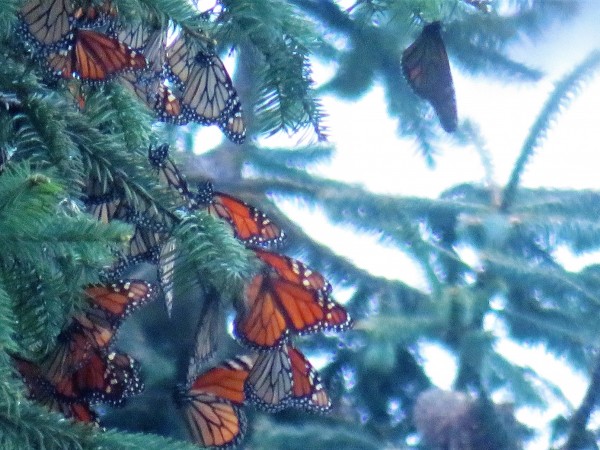Letter From Ellen Sharp: First Arrivals Spotted
Reporting From: Macheros, Ejido El Capulin, State of Mexico
Published: 11/04/2020
Dear Butterfly People,
November 1st found the El Capulin cemetery eerily empty. An official sign at the gate required the application of hand gel, the use of masks, and visits of 15 minutes or less. There was no gel on hand, only a smattering of masks in use, and the one significant gathering, a new widow and her adult children surrounded by coolers and a sound system, looked like they weren’t leaving anytime soon.
If the cemetery was sparsely populated by the living on this Day of the Dead, skies overhead were alive with dark specks darting here and there. These latest arrivals of the monarch migration pumped their wings determinedly as they headed towards Cerro Pelon, the mountain looming over the valley that houses our villages and their shared cemetery. Sometimes a monarch dipped down and hovered close enough to flash its bright orange wings. Watching them, I forgot my usual worries about money, disease and death, amped up in this season of uncertainty. All day yesterday, whenever I looked up, the butterflies were there, reminding me that at least for the monarch migration, it’s business as usual.
It won’t be business as usual for the Cerro Pelon Monarch Butterfly Sanctuary. Every fall, communities with a sanctuary entry must purchase an inexpensive permit from the Monarch Butterfly Biosphere Reserve in order to take visitors to see the monarch colonies. This season, our local authorities declined to purchase the permit, which means that Cerro Pelon will be closed to the public all season. While this decision may be epidemiologically sound, it’s ecologically worrisome: butterfly tourism was one of the few environmentally sustainable jobs available in our community.
Back when I thought the pandemic would be over by now, I ran across a Rachel Carson quote that gave me great comfort as I watched the sun set from my lock down perch: “There is something infinitely healing in the repeated refrain of nature...” In Mexico, Dia de Muertos used to give us a man-made refrain, an annual reminder to hold our loved ones dear as we marked the months or years since our last searing loss. In 2020, this celebration was sadly truncated, as public commiseration turned inward to private grief. People still made elaborate household shrines in honor of their dead, but most stayed home and avoided the cemetery. What a blessing it was that the monarch migration at least was back, festooning the sky during this strangely sedate Day of Dead.
We don’t always see the monarchs streaming in at the beginning November. In 2019, the first few flew in on October 31 and didn’t arrive en masse until after the holiday. In 2018, none appeared until November 6. This season, the forest guardians of Butterflies & Their People spotted the leading edge of the migration entering the Cerro Pelon sanctuary early: October 23. Five days later, these newcomers formed a roost, but cold weather and strong winds dispersed this initial settlement on November 1, pushing the date of the formation of the monarchs’ first stable colony of the season into the near future.
For the first time in eight years, my partner Joel and I won’t be taking people to see the butterflies’ progress in person. In our newfound quietude, we’ll have the time to record the sequence of the monarch overwintering season and share it safely online through virtual butterfly experiences. Apart from the formation of the first colony, these events include:
- the continuation of their month-long, staggered arrival,
- the colony’s relocation to a lower clime,
- its subsequent splitting into two or more locations,
- the intensification of flight activity,
- the beginning of mating season,
- a mounting mortality rate,
- frenzied nectaring on flowers as the survivors fatten up for remigration,
- the beginning of a month-long, staggered departure that lasts until mid-March.
We’ll be taking comfort in these repeated refrains, fully aware that the monarchs are like jazz musicians, always improvising and trying out new notes as they adapt to the exigencies of the era in which we live.
I’ll be doing my best to follow their lead.
Saludos,
Ellen Sharp
Ellen Sharp is the co-owner of JM Butterfly B&B and Ecotours, located at the Macheros entry of the Cerro Pelon Monarch Butterfly Sanctuary. She is also the co-founder of Butterflies & Their People, a forest conservation non-profit that employs six guardians in the Cerro Pelon Sanctuary. Sharp holds a PhD in cultural anthropology from UCLA. More of her writing is available at ellensharp.com

